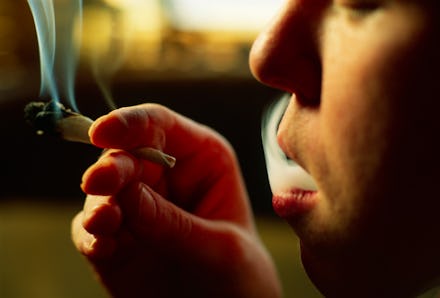Here's What Happened to Teen Drug Use in the U.S. After States Legalized Marijuana

It's on the decline. That's the takeaway from the 2014 Monitoring the Future study, which tracked drug use among more than 40,000 eighth, 10th and 12th graders across the United States. Produced by the University of Michigan and the National Institutes on Drug Abuse, the comprehensive study looks at trends in alcohol, marijuana and cigarette use, among other drugs.
On the whole, each of these three substances has seen a drop in use among teenagers, but it's the data on marijuana use that stands out in the wake of legalization efforts in across the country. Across every age group and in almost every category of use (lifetime, past year, past month, daily), the numbers diminished from over the past year.
This decline, of course, comes during a stretch of time in which Colorado and Washington both ramped up their legal marijuana production, and Oregon, Alaska and Washington, D.C., all passed ballots with legalization measures.
So, that nightmarish hellscape America was supposedly destined to become once we legalized marijuana? It doesn't actually exist.
No new arguments here: Legalization opponents have long trotted out teen pot use. As the Washington Post's Christopher Ingraham points out, everyone from Richard Nixon to recent anti-marijuana evangelist Andy Harris has cited an uptick in teen drug use as a key reason to fight against marijuana legalization.
"Relaxing [marijuana] laws clearly leads to more teenage drug use," argued Harris in an appearance at the Heritage Foundation in December. "It should be intuitively obvious to everyone that if you legalize marijuana for adults, more children will use marijuana because the message that it's dangerous will be blunted."
The same thinking applies in Florida, where anti-legalization advocates have subsidized ads arguing that voting yes on the legalization ballot would lead to wrack and ruin for the state's children.
As Mic's Abdullah Saeed wrote in June, popular culture only reinforces the trend as well. Movies like Reefer Madness — now viewed as a comedic cult classic, but at the time of its release, it was taken more seriously — established the specter of social and political threats long associated with teen drug use as part of the public consciousness.
But it's simply not true, and it's not just Monitoring the Future's study that demonstrates it. A paper published in July by economists Daniel Rees, Benjamin Hansen and D. Mark Anderson found next to no connection between medical marijuana and juvenile use of the drug. According to the Centers for Disease Control and Prevention's Youth Risk Behavior Surveillance System, the number of young people who have tried marijuana declined slightly, from 42.4% in 2001 to 40.7% in 2013. And the trend of current users stayed relatively flat at about 25% of all teens.
Or, think about it this way: During the 1990s, when the war on drugs was at its height, marijuana use among adolescents skyrocketed.
In other words, the kids are perfectly alright.
h/t Washington Post